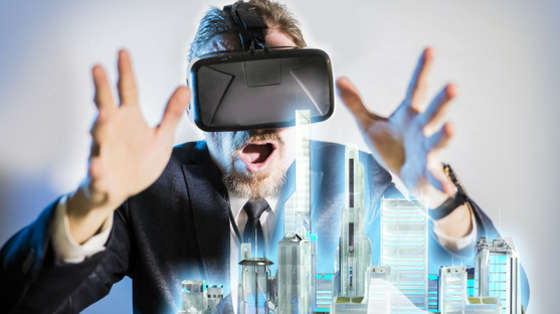As an architect who focuses on space transition projects, my goal is to move an organization’s facilities from traditional to more collaborative and mobile. But I also try to look beyond today’s needs to future work practices and office designs. I believe the most effective way to look forward is to first consider past trends. Thus, I like to look backward for answers. Sometimes way back.
This article summarizes some of my observations on the trends that have brought us to where we are today in office design. It also considers those that are likely to influence design in the future. The question I ask myself is this - will the bricks and mortar office, even the open office version, exist in the future? Or will we be looking at something very different?
A Point in Time - The Open Office Environment
Today’s open office environment supports collaborative and mobile work practices better than the “traditional” office did. Will the forces that moved us from the traditional office to the open office continue to propel us forward in the future? Or will a new set of forces arise? Let’s begin by looking briefly at how we got to where we are today.
Collaboration
The need for collaboration is one of three factors leading to the rise of the open office.
Prior to the Industrial Revolution, most forms of economic production were performed in a relatively simple manner. They were frequently associated with an individual’s residence – the baker living above the bakery or Jacob Marley living above his accounting office. Following the Industrial Revolution, increased complexity in producing goods and services required a greater level of specialization and collaboration. This ultimately led to the advent of “the office” as a place for conducting business.
The increases in the need for specialization and collaboration in many businesses created the realization that group consensus was essential to success. This became a self-reinforcing trend. The need for consensus reinforced collaboration as an essential work practice, which further reinforced the need for consensus, and so on.
The result? The physical forms of today’s open offices seek to accommodate and encourage collaboration through features like collaborative hubs and huddle rooms.
Mobility
Supporting worker mobility in the form of teleworking and other remote work practices is the second factor that has led to the current open office environment.
Mobility as a factor in economic production began to make a significant appearance with the advent of the mass-produced automobile and paved roads in the early- to mid-20th century. This increase in mobility led to the development of the suburb and the opportunity to live an extended distance from one’s place of employment. More recent advances in communications and data technologies – the internet, the laptop, the smartphone – allow individuals to now live and work an extended distance from their place of employment. These technologies have also allowed workers to move beyond the home as a fixed place of work. The car, the coffee shop, or other spaces in the office are all available as places to work. This has dramatically increased the popularity of the mobile office.
The result? The physical forms of today’s open offices have responded to these mobile work practices with features such as shared touchdown stations and other “hoteling” practices.
Democratization
A third factor in the modern open office environment is the trend toward increased democratization, which parallels the Industrial Revolution. Following the French and American revolutions, democratization as a cultural norm in western industrial societies became a dominant factor. This concept has also become the standard in the business environment and has led to the status-free (at least in appearance), egalitarian, open-office environment where management and staff interact without barriers.
The result? Today’s open offices accommodate these democratic values with features such as the reduction or elimination of private dedicated offices and an increase in open collaborative spaces.
Will the same forces that propelled our offices to today’s open office format continue to influence us in the future?
The Future
Here’s where the going gets tough. Predicting the future is not an easy task. Alvin Toffler proved to be good at it in his 1970 book Future Shock. He was certainly spot-on when arguing that the rate of technological change will get faster and faster. Others have not done so well. Every time I reread the 1996 book Minutes of the Lead Pencil Club, a book that sheds doubt on the viable future of the computer, I am amazed at how far it missed the mark. Nevertheless, here goes my prediction on what will move us forward.
Urban Growth and Demographics
According to the U.S. Census Bureau, the nation's urban population increased by 12.1% from 2000 to 2010, and urban areas now account for 80.7% of the U.S. population. Although the rural population grew by a small amount from 2000 to 2010, it continued to decline as a percentage of the national population. Increased urban density equates to increased vehicular density, despite the advances in smart cars and mass transit.

Urban Vehicular Gridlock as the Norm?
Without including a treatise on the social and economic forces that have moved us toward increased urbanization, it is safe to say this trend will continue for the foreseeable future. How will we cope, and what will this force mean for future office environments? Consider these two factors.
Walkable Urban Environments
In recent years, progressive city planning professionals have been promoting the concept of walkable urban environments: live downtown, work downtown, shop downtown, eat downtown. All without the need to commute or even own a car. I travel throughout the U.S. and see this concept taking hold in many cities, large and small. It is particularly dominant in my hometown of Greenville, South Carolina, where living downtown has become extraordinarily popular in the past 10 years. Picture brick walkways dotted with cafes, boutiques and shops, grocery stores, and trendy restaurants. And don’t forget the dog park across the street.

Downtown Greenville…. Crowded on a Sunday Afternoon
What will this trend mean for the office of the future? One could envision a return to the pre-Industrial Revolution model with a residence located above the accounting office, only on a larger scale. A multi-use high-rise building encompassing integrated offices, retail shops, and residences, for example. The trend toward walkable urban environments suggests that office workers could pop in and out of the office on a casual basis due to proximity to their residences. This could be especially true if office environments continue to be designed as attractive and appealing destinations that actively support flexible work practices.
Of course, the walkable urban environment can be somewhat counterproductive. The attractiveness of the urban area can draw many visitors. Although good for the economy, this can make the urban areas even more congested.
Also, the urban lifestyle may only appeal to a smaller portion of the office population – those without children and older workers closer to retirement age. Office workers with families may still opt for lower density environments.
Mobility as a Necessity
For those office workers that instead opt to live in rural or suburban areas, mobile work may become a necessity. It may not be possible to commute to work due to the increasing gridlock or lengthy commute times. In these instances, teleworking may become a full-time work style for many people.
More Advanced Technology
One thing that should have become clear from watching the advances in technology over the past 20 years is that Alvin Toffler was right. The rate of technological change is getting faster and faster. This seems to be especially true in areas of data transmission and storage and communications. (Please don’t expect me to define the specifics of future technologies. As a boomer, I can only follow the progress in complete awe.)

Unimagined Technologies
One of the likely areas for continued technological advance is automation. Mark Cuban, the billionaire software developer, recently predicted that “technology will soon be able to do the jobs that software developers do. Seeing it as ‘only math,’ human developers won't be needed on the same scale, hence the prediction that many current computer-related jobs will be replaced by computers.” I would add that it’s doubtful that automation will be limited to writing software code. In fact, today’s vanishing factory worker may lead to tomorrow’s vanishing office worker.
Freelance Economy
To further exacerbate the trend toward the vanishing office worker, there is also a trend for white collar tasks to be performed by fully dedicated freelance consultants. The U.S. Bureau of Labor Statistics expects freelance labor to grow to 16% of the total workforce by 2020. This trend certainly raises issues of coordination, communication, and human resource management. But it also raises facility issues. Is there a need for a freelance consultant to be present in a bricks and mortar office? What if the freelance consultant works for multiple organizations simultaneously? And would a freelance consultant even want to make a commitment to a single organization that might include relocating or working in a physical office, especially if he or she were already accustomed to a home office?
Putting it All Together
Looking forward, the complexity of the work product and the number of staff required is not likely to decrease, even with advances in automation. This will continue to require collaboration among the workforce, which office designs will need to continue to support. Mobile work as a necessity will likely become the trend as physical travel limitations become more intense. Finally, democratization as a workplace value is not likely to diminish.
So, what will it mean to have increasingly empty offices combined with continued complexity in the work product?

The Office in Cyberspace
My theory is that the bricks and mortar office will fundamentally vanish. It will instead be replaced by the virtual office, where workers are connected by highly sophisticated technologies. Perhaps there will be some residual elements of a physical office in the form of an office social hall where walkable urban employees and those willing to brave long commutes can occasionally get together.
Perhaps the urban communities where most of us will live will themselves evolve to provide public spaces for work and collaboration (the “Starbucks office” comes to mind).
This vision of the future office certainly aligns with the past and future forces we have considered. After all, the best predictor of the future is the past. But will the virtual office really be the open office environment of the future? Will we be viewing the office and our coworkers through virtual reality glasses? Stick around, we’ll see.






















